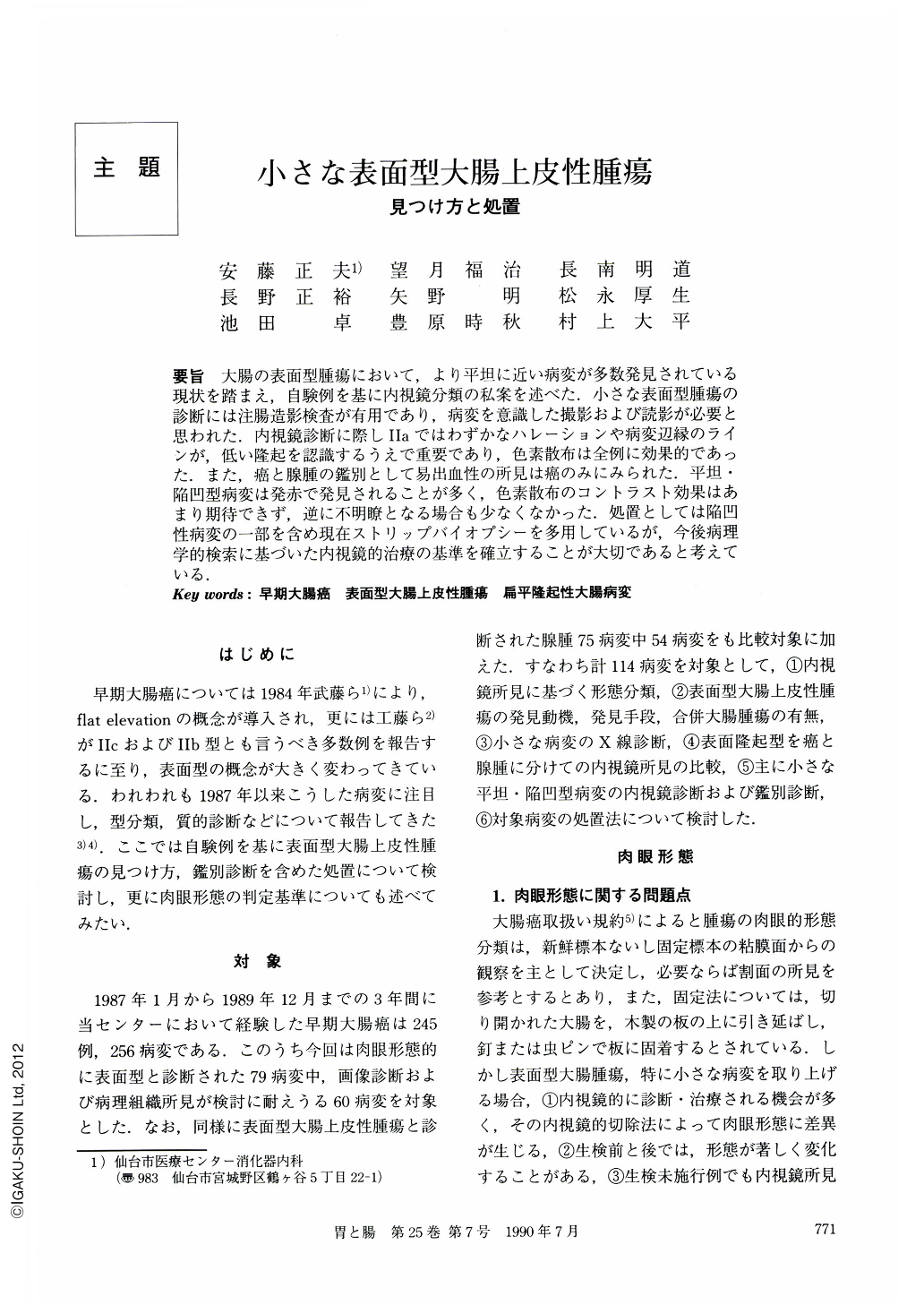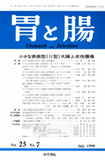Japanese
English
- 有料閲覧
- Abstract 文献概要
- 1ページ目 Look Inside
要旨 大腸の表面型腫瘍において,より平坦に近い病変が多数発見されている現状を踏まえ,自験例を基に内視鏡分類の私案を述べた.小さな表面型腫瘍の診断には注腸造影検査が有用であり,病変を意識した撮影および読影が必要と思われた.内視鏡診断に際しⅡaではわずかなハレーションや病変辺縁のラインが,低い隆起を認識するうえで重要であり,色素散布は全例に効果的であった.また,癌と腺腫の鑑別として易出血性の所見は癌のみにみられた.平坦・陥凹型病変は発赤で発見されることが多く,色素散布のコントラスト効果はあまり期待できず,逆に不明瞭となる場合も少なくなかった.処置としては陥凹性病変の一部を含め現在ストリップバイオプシーを多用しているが,今後病理学的検索に基づいた内視鏡的治療の基準を確立することが大切であると考えている.
As for superficial and flat type tumor of the colon, we advocated that type-Ⅱa tumors with evident elevation, even though their tops were flat, should rather be classified as a subtype of type-I tumor.
Barium enema examination was useful to diagnose small superficial and flat type tumors of the colon, and it is necessary to imagine the lesions when we take or read pictures. Slight halation or faint line of the tumor was a clue to recognize the elevation of flat type-Ⅱa tumors by endoscopic examination. Dye-spreading method was effective for all type-Ⅱa lesions. Easy bleeding was peculiar to cancer compared with type-Ⅱa adenoma. Most small type-Ⅱb, type-Ⅱc, and type-Ⅱa+Ⅱc tumors were discovered by means of redness at endoscopic examination. Dye-spreading method was not always effective for these lesions.
At present, we perform strip biopsy for small type-Ⅱ lesions without evident depression. But it will be a very important work to make criteria for endoscopic therapy for these tumors.

Copyright © 1990, Igaku-Shoin Ltd. All rights reserved.


